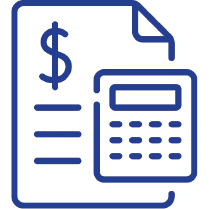Financial Statement Analysis
Financial Statement Analysis: Unlock the Power of Accurate Financial Insights
Financial statement analysis is a crucial process for understanding a company’s financial performance. Through analyzing key documents like the balance sheet, income statement, and cash flow statement, businesses can gain valuable insights that inform critical decisions. At Cynosure Accounting, we specialize in providing expert financial analysis that helps businesses improve their financial strategy, ensure compliance, and unlock growth opportunities.
Comprehensive Accounting Services for Your Business
At Cynosure Accounting, we provide professional accounting services designed to simplify financial management and drive your business success. Whether you’re a small business, a startup, or an established corporation, our expert team delivers tailored solutions that meet your unique needs.
Why Is Financial Statement Analysis Essential for Your Business?

A proper financial statement analysis provides businesses with actionable insights that can lead to better decision-making. Some key benefits of financial-statement analysis include:
- Informed Decisions: Helps business owners understand the financial health of a company and make smarter decisions.
- Risk Identification: Allows you to detect potential financial issues early and mitigate risks.
- Investor Confidence: Transparent financial and credit analysis builds trust with investors, creditors, and other stakeholders.
- Improved Operational Efficiency: Highlights inefficiencies in cash flow or profitability that can be optimized.
Without a thorough analysis, businesses may miss out on opportunities or fail to identify issues before they become critical.
Types of Financial Statements Analyzed in Financial Accounting
Balance Sheet Analysis: Understanding Your Assets and Liabilities
The balance sheet provides a snapshot of a company’s financial position at a specific point in time. The process of analyzing the balance sheet helps businesses assess whether they have enough assets to cover their liabilities. Key elements to analyze include:
- Assets: What the company owns.
- Liabilities: What the company owes.
- Shareholders’ Equity: The portion of assets that belong to the shareholders.
A clear understanding of the balance sheet helps ensure that a company is financially stable and can meet its obligations.
Income Statement Analysis: A Look at Profit and Loss
The income statement details the revenue and expenses over a particular period. It helps businesses assess whether they are operating profitably. Key components of the income statement include:
- Revenue: The income generated from business operations.
- Expenses: The costs incurred in running the business.
- Net Income: The bottom line profit after expenses are deducted.
Cash Flow Statement Analysis: Understanding Your Liquidity Position
The cashflow statement tracks the movement of cash in and out of the business. It reveals how much cash is available to fund day-to-day operations, pay off debt, or invest in growth. Key components include:
- Operating Cash Flow: Cash generated from core business operations.
- Investing Cash Flow: Cash used for or received from investments.
- Financing Cash Flow: Cash generated from or paid to external sources of funding.
Analyzing cash flow helps businesses understand their liquidity and ensure they can meet financial obligations.
Key Financial Ratios in Financial Statement Analysis
Financial ratios are essential tools for assessing a company’s financial performance. Some of the most valuable ratios to consider include:
- Liquidity Ratios: Assess the company’s ability to meet short-term obligations (e.g., current ratio, quick ratio).
- Profitability Ratios: Measure how well a company generates profit (e.g., return on assets, net profit margin).
- Leverage Ratios: Examine the level of debt relative to equity (e.g., debt-to-equity ratio).
These ratios provide a clear view of a company’s financial health and operational effectiveness.
How to Analyze Financial Statements for Business Success
Financial statement analysis is the process that involves several key steps:
1. Gather Financial Statements
Start by collecting the balance sheet, income statement, and cash flow statement for the relevant period.
2. Evaluate Key Metrics
Use financial ratios and trends to assess your company’s profitability, liquidity, and financial health.
3. Compare with Industry Standards
Benchmark your company’s performance against industry averages to gain insight into areas for improvement.
4. Identify Strengths and Weaknesses
Look for patterns that reveal your company’s strengths and weaknesses. Use this information to optimize business performance.
5. Make Data-Driven Decisions
Leverage insights from the analysis to make informed decisions about growth, cost-cutting, and investment.
How Financial Statement Analysis Drives Success
Financial performance is at the heart of any successful business. By regularly analyzing financial statements, companies can monitor their financial health, identify areas for improvement, and stay on track to achieve their goals. Strong financial performance helps businesses build trust with investors, improve cash flow, and secure long-term growth.
At Cynosure Accounting, we help businesses unlock the full potential of their financial data, ensuring their financial health aligns with their business goals.
Why Choose Cynosure Accounting for Financial Statement Analysis?
At Cynosure Accounting, we specialize in providing detailed, accurate basic financial statement analysis for businesses of all sizes. Our experienced team offers:
- Tailored Analysis: Customized financial analysis that aligns with your specific business needs.
- Actionable Insights: Clear, data-driven insights to improve your business strategy and financial health.
All Clients Are Important For Us






